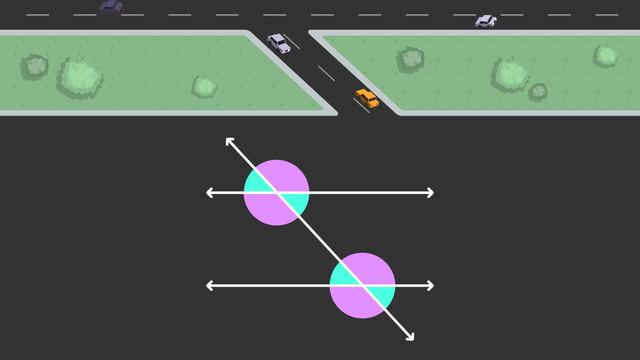What are Supplementary and Complementary Angles?
Learning text on the topic What are Supplementary and Complementary Angles?
Supplementary and Complementary Angles – Introduction
In geometry, understanding angle relationships is essential, especially when we talk about supplementary and complementary angles. These concepts are key tools for solving puzzles about missing angles without even using a protractor. Mastering these angles helps you tackle various geometric problems more efficiently and see the shapes in the world with a new perspective. Whether you're working on a school project, designing something creative, or just curious about how things fit together, knowing about these angles is incredibly useful. It’s all about applying these ideas to figure out angles in real-life scenarios, boosting your skills in geometry and beyond.
| Definition | Image (Illustration Request) | Examples | |
|---|---|---|---|
| Complementary Angles | Two angles whose sum is 90 degrees. |  |
|
| Supplementary Angles | Two angles whose sum is 180 degrees. |  |
Having a basic understanding of angles and measuring angles will be helpful when it comes to understanding angle pairs.
Complementary Angles
Complementary angles are two angles whose measures have a sum of exactly 90 degrees. When combined, they form a right angle.
Identifying Complementary Angles
To determine if two angles are complementary, you can calculate the sum to find out if it is equal to $90^\circ$.
Are the angles $40^\circ$ and $45^\circ$ complementary?
- Add the angles together $40+45$.
- Answer the question, is this sum exactly $90^\circ$? The answer is no, as $40+45=85$, so these angles are not complementary
Are the angles $53^\circ$ and $37^\circ$ complementary?
- Add the angles together $53+37$.
- These angles have a sum of 90 degrees since $53+37=90^\circ$ and so therefore are complementary. These two angles form a right angle.
Finding a Complementary Angle
If one of the two angles are known, using subtraction can help to find the angle that is complementary to the given angle.
What is the measure of the missing complementary angle?
- Since a right angle is equal to 90 degrees, this is our total.
- The known value, in this case, $41^\circ$ can be subtracted from the total to find the missing complementary angle. $90-41=49$.
- $41^\circ$ and $49^\circ$ are complementary angles because they have a sum of $90^\circ$.
Finding missing angles is a skill that will be helpful for solving problems involving more complex angle relationships.
Supplementary Angles
Supplementary angles are two angles whose measures sum to 180 degrees, together forming a straight line.
Think of a straight ruler as an analogy. If two angles were placed at one end of the ruler, with their vertices meeting at the same point and their sides extending along the ruler's length, these angles would be supplementary if they covered the entire 180-degree space opposite each other.
Identifying Supplementary Angles
To determine if two angles are supplementary, you can calculate the sum to find out if it equals $180^\circ$.
Are the angles $120^\circ$ and $60^\circ$ supplementary?
- Add the angles together $120+60$.
- Answer the question, is this sum exactly $180^\circ$? Yes, they are supplementary!
Are the angles $130^\circ$ and $40^\circ$ supplementary?
- Add the angles together $130+40$.
- These angles have a sum of 170 degrees since $130+40=170^\circ$. These two angles do not form a straight line and so therefore are not supplementary.
Finding a Supplementary Angle
If one of two angles is known, using subtraction can help to find the angle that is supplementary to the given angle.
What is the measure of the missing supplementary angle?
- Since a straight line is equal to 180 degrees, this is our total.
- The known value, in this case $38^\circ$, can be subtracted from the total to find the missing supplementary angle. $180-38=142$.
- $38^\circ$ and $142^\circ$ are supplementary angles because they have a sum of $180^\circ$.
Supplementary and Complementary Angles – Application
A skateboard ramp forms an angle of $140^\circ$ with the ground. What is the measure of the angle between the ramp and a vertical line from the ground?
- Since a straight line measures $180^\circ$, and the ramp forms a $140^\circ$ angle with the ground, we're looking for the supplementary angle.
- Subtract the ramp's angle from $180^\circ$ to find the missing angle: $180 - 140 = 40$.
- The angle between the ramp and a vertical line from the ground is $40^\circ$.
Supplementary and Complementary Angles – Summary
Key Learnings from this Text:
- Complementary angles sum to 90 degrees and form a right angle.
- Supplementary angles sum to 180 degrees and create a straight line.
- Understanding these angle pairs is essential for solving various geometric problems without the use of a protractor.
 Do you want to learn faster and more easily?
Do you want to learn faster and more easily?














